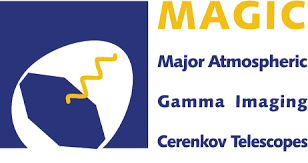Research
The group has a long and renowned track of astrophysical research on active galactic nuclei (AGN, mainly blazars), galactic compact objects and their environments and other highly energetic and transient sources at all spectral ranges from radio up to gamma-ray wavelengths, as well as in software development for astronomical data analysis and archives.
From the scientific point of view, the group accumulates extensive expertise in the multi wavelength (MWL) astrophysical interpretation of data from AGN and other highly energetic transient astrophysical systems. In particular, the group leads all optical polarimetric (TOP-MAPCAT program) and millimeter wave polarimetric (POLAMI) monitoring programs for the MWL monitoring of a large set of blazars at all available spectral ranges.
The group is also involved in the study of galactic cosmic ray acceleration through the study of the non-thermal spectrum of sources powered by compact objects such as pulsars, pulsar wind nebulae and gamma-ray halos around pulsars, as well as the research of cosmic ray transport in the galaxy.
The group is part of the MAGIC Imaging Atmospheric Cherenkov Telescopes (IACT) located on the island of La Palma. The group is also part of the Cherenkov Telescope Array Observatory (CTAO) that builds the next generation of imaging atmospheric Cherenkov telescopes in La Palma (Spain) and Paranal (Chile) through the CTAO Consortium and the LST (Large-Sized Telescope) Collaboration, where the main work that is still required to be developed for the commissioning, science verification, and science exploitation of the first and the largest of the CTAO prototypes (LST-1) is in line with our main fields of expertise.
We are experts on the IACT data analysis, contributing as core software developers to cta-lstchain, the low-level analysis software of the LST. We are also contributing as core software developers and as part of the Coordination Committee of Gammapy, a python based package for the modeling, fitting and analysis of gamma-ray data, which was chosen as the Science Analysis Tool for CTAO. Besides specific contributions related with gammapy software, the group has been working on two main structural aspects of the software, i.e. data provenance capture and inspection of the VHE research process, and high-level interface for the configuration of workflow-driven analysis.
The group is also heavily involved in the implementation of new deep learning techniques such as the application of Convolutional Neural Networks to the analysis of IACT data. The implementation of this technique to the analysis of IACT data has already shown very promising preliminary results on data from MAGIC and LST, and can be also applied to other both scientific and non-scientific fields where advanced tools for decision taking by computers are needed.



